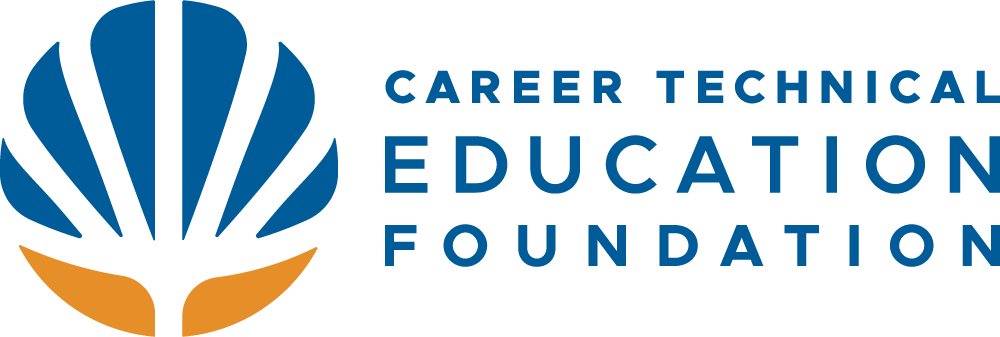[et_pb_section admin_label=”section”][et_pb_row admin_label=”row”][et_pb_column type=”1_2″][et_pb_text admin_label=”Sonoma County High Schools to Receive Over $500,000 for Career Technology Programs – Text” background_layout=”light” text_orientation=”left” use_border_color=”off” border_color=”#ffffff” border_style=”solid”]
Santa Rosa, California (June 10, 2013) –
Six school districts will receive $17,000 to $20,000 a year each renewable up to five years to expand course offerings and workforce training opportunities through Sonoma County’s Career Technology Education (CTE) Fund. The grants are from a fund established in 2012 with the Community Foundation Sonoma County, initially by private donors Tony Crabb and Barbara Grasseschi, for the purpose of supporting educational efforts designed to prepare students to become successful citizens in the 21st century and truly be college and career ready. The fund grew rapidly when the County of Sonoma approved a five year commitment at $50,000 per year, which was equally matched by the John Jordan Foundation, for a total pledge of half a million dollars through 2016. “We know one of the keys to a stronger economy is investing in our local schools and providing high school and college students with access to modern and innovative job skills programs. Local government and the Sonoma County business community are partnering to provide our young people with the workforce tools they need to thrive in this new economy”, Fourth District Supervisor, Mike McGuire says of the County’s support. Additional private donations are being sought to further enhance the fund. “Our vision is to provide more opportunities for students, our future workforce, to experience the hands-on learning and exploration necessary to connect their education to the real world and specifically match with the economic and workforce development needs of Sonoma County,” expresses Tony Crabb, CTE Fund Advisory and owner of Puma Springs Vineyards.
More than 350 Career Technical Education courses are currently offered through 15 Sonoma County high schools and include hands-on training in industry related courses in agriculture, arts, media and communications, automotive, building trades, business, finance, manufacturing, culinary arts, healthcare, energy, information services and retail trade. “To ensure the economic vitality of Sonoma County, we have to invest in local education programs that are aligned with the key economic drivers of our county and to ensure success for all students, from middle school through post secondary education” says Stephen Jackson, Director of Career Development/Workforce Preparation Services, Sonoma County Office of Education. “This includes applying essential academic standards in Science, Technology, Engineering and Math (STEM) throughout all our CTE courses.”
In addition to funding, the success of the CTE program relies on the strength of private/public partnerships that include the County of Sonoma, Sonoma County Office of Education, Sonoma State University, Santa Rosa Junior College, area school districts, and numerous local employers, sponsors, and organizations.
[/et_pb_text][/et_pb_column][et_pb_column type=”1_2″][et_pb_text admin_label=”Text” background_layout=”light” text_orientation=”left” use_border_color=”off” border_color=”#ffffff” border_style=”solid”]
The following school district CTE programs have been selected:
Healdsburg Unified School District – Farm to Table Course. This grant would provide additional funding for staff and to integrate CTE curriculum and offer a Farm to Table course co-taught by two CTE teachers in the areas of Culinary Arts and Agriculture.
Petaluma Joint Union High School District – Engineering Technology. The High School seeks to attract students to their Industrial Technology program who are capable of high-level theoretical academic work and who are interested in STEM areas such as engineering technology. The funding will cover the teacher, textbooks and other instructional materials as well as a supply budget for the course.
Santa Rosa City High School District – CTE Project Make-Applied Lab Implementation. This grant will allow for Santa Rosa City Schools to expand upon its Linked Learning initiatives by providing funding for the implementation of a CTE Project Make – Applied Lab to be linked with an already existing core Physics Course at Piner High School.
Sonoma Valley Unified School District – Engineering Design and Technology Linked Learning
Pathway. The High School offers an Engineering, Design and Technology linked learning pathway elective, Introduction to Engineering and will add Principles of Engineering course next Fall (2013). This funding will support both electives courses and related expenses associated with Work-based Learning – including internships, externships, transportation and other related expense West Sonoma County Unified High School District – Project Make. Project Make is an innovative, hands on curriculum where student explore and create project-based activities to foster their ingenuity. This 21st century learning course is designed to allow students opportunities to build, design, and develop ideas from conception to developmental planning stages to finished product. This class has been featured on CNN as a modern day shop class for students and enhances student’s interest in science and math.
Windsor Unified School District – STEM CTE Course and Establishment of a Regional MESA Program. This grant application has TWO interrelated areas of STEM (Science, Technology, Engineering, Math) focus: 1) To fund the CTE STEM course created by Project Lead the Way called Principles of Engineering and Design, which will be taught in the Windsor High AXIS STEM ACADEMY for 10th, 11th, & 12th Graders. 2) To establish a North County Regional MESA Program (Mathematics, Engineering, Science Achievement) which participates in local and national MESA competitions. The CTE fund Advisory Committee plans to raise an additional $140,000 this year with hopes of raising $500,000 a year within the next five years. The funding cycle begins in January of each year with requests for proposals going out to area high schools with grants awarded the following July to prepare for program implementation in the fall.
[/et_pb_text][/et_pb_column][/et_pb_row][et_pb_row admin_label=”Row”][et_pb_column type=”4_4″][et_pb_divider admin_label=”Divider” color=”#ee9560″ show_divider=”on” divider_style=”solid” divider_position=”top” hide_on_mobile=”on”] [/et_pb_divider][/et_pb_column][/et_pb_row][/et_pb_section]




